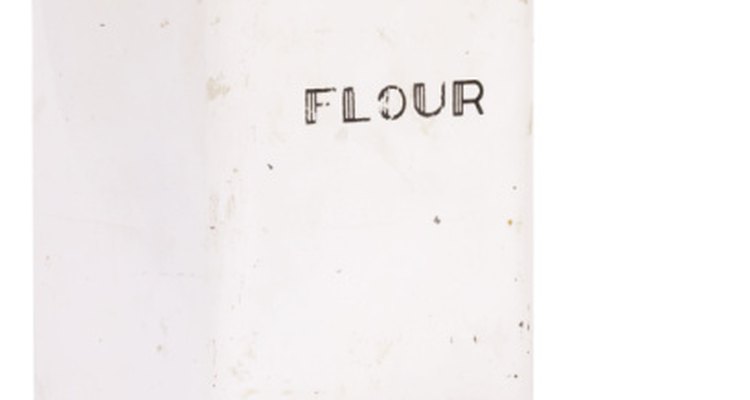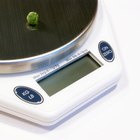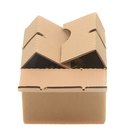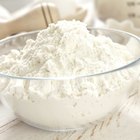
Many different shortcuts exist for cooks in the pantry. Self-rising flour is one of these shortcuts that has flour, salt and baking soda. If you have a recipe that calls for all-purpose flour and also calls for salt and baking soda, you can substitute the self-rising flour for all-purpose flour in many cases. However, in some cases, your final product might rise and then fall if you have too much baking soda because of the self-rising flour. In recipes where you don't add enough baking soda in the conversion, the dish might not rise enough.
Determine the conversion ratios. One cup of self-rising flour is the same as 1 cup of all-purpose flour, 1/8 tsp. of salt and 1 1/4 tsp. of baking soda.
Look at what the recipe calls for. Assume you are baking a cake calling for 2 cups of all-purpose flour with 2 tsp. of baking soda and 1 tsp. of salt.
Calculate how much salt you need to add. The 2 cups of self-rising flour have approximately 1/4 tsp. of salt. You will only need to add 3/4 tsp. to your recipe now.
Calculate how much baking soda you need to add. Two cups of self-rising flour contain approximately 2 1/2 tsp. of baking soda. You have more baking soda than you need. This means that the baked product might rise too high; you can't sift out the baking soda, so you will have to accept this as part of the substitution result.
Related Articles

How to Convert a Measuring Cup to a ...
Flour Substitute for Muffins

How to Make Creamy Alfredo Sauce With ...

How to Substitute Oleo for Cooking Oil ...

How to Substitute Cocoa Powder for ...

How to Season Flour for Fried Chicken

How to Calculate Shipping Volume

Grilled Mahi Mahi Calories

Bread Flour vs. Cake Flour in Sponge ...

How to Replace Flour With Oat Flour

How to Freeze Empanadas
Does Cake Flour Contain Baking Soda & ...

How to Calculate the Number of Wedding ...

How to Calculate Portions

How Do I Find Out the Tax ID Number for ...

How to Determine a Cross Dresser's ...

How to Use Millet Flour

How to Make Really Good Lemonade

How to Grill Perch

What Can I Use in Place of Sour Cream?
References
Writer Bio
With more than 15 years of professional writing experience, Kimberlee finds it fun to take technical mumbo-jumbo and make it fun! Her first career was in financial services and insurance.
Photo Credits
Hemera Technologies/PhotoObjects.net/Getty Images